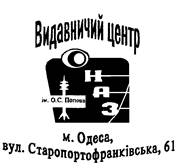Transformation to the system of units SI of a numerical data of given quantities
ODESSA NATIONAL ACADEMY OF TELECOMMUNICATIONS
After A. S. POPOV
===============================================
 Department of physics of optical communications
Department of physics of optical communications
PHYSICS
Module 2. Electrical oscillations and waves
ELECTROMAGNETIC
OSCILLATIONS and WAVES
PART 2: COMPLEX TASK
for bachelor training of educational area 0924 –“Telecommunications”
APPROVED
by the Faculty Council
Protocol № 7
from 14.02.2009
ODESSA 2009
UDK 621.382 Plan of publication 2009.
Writers: assoc. prof. Gorbachev V.E., Tumbrukati E.G.
The following methodical guide is about section “Electromagnetic oscillations and waves” of physics course for telecommunications technician. Four problems allow students to learn basics of electrical engineering and calculations techniques applied to determine main characteristics of electrical oscillations systems and electromagnetic waves. It contains sufficient theoretical information combined with examples of problems’ solutions.
Recommended for students of TE-group, educational area 0924 –“Telecommunications”.
CONFIRMED
at the Department session
Protocol № 6
from 27.02.2009
MODULE STRUCTURE
Module № 2. „ Electrical oscillations and waves” –72 hours total
Lectures – 16 hrs, pract. trainings – 0 hrs, labs – 16 hrs, self-studies – 33 hrs.
LIST OF PRACTICAL TRAINING
| Number of lessons | Denomination of lessons | Hours |
| Module № 2 | ||
| Mechanical harmonic oscillations. Methods of representation of harmonic oscillations. | self | |
| Calculation of parameters of harmonic electrical oscillations. | lab | |
| Damped oscillations. Parameters of damped oscillations. Quality factor of a system. | self | |
| Calculation of parameters of damping electrical oscillations. | lab | |
| Electrical driven oscillations. Alternative current. Phasors. | self | |
| Calculation of current and voltage in RLC circuit. | lab | |
| Electromagnetic waves. Energy flux density. | self | |
| Calculation of parameters of electromagnetic waves. | lab |
INTRODUCTION
All problems should be solved in a individual way, i.e. each student have its own variant, which is specified by instructor.
Appropriate homework must forego to solving a problem. The homework contains self-studying of theory of sections “Oscillations” and “Waves” of the course of physics for telecommunications technician.
· Complex task is consists of four problems: 3.2; 3.3; 3.4; 3.6. Student must implement on one task from each problem. Concrete number of statement on each stage and initial data in thirty variants is specified in Tables of task variants. Number of the variant is determining by the index of surname of student at a group journal.
· Report is implementing on individual exercise book. Writings should be made on one side of double-page spread.
· On the cover there is need to mark title of the work, number of the variant, surname and initials of student, code of group.
· Calculation part it is necessary to dispose in order of numeration of the problems.
· Calculation part of any problem must contain ten points (see examples):
1. Title of theproblem;
2. Completestatement of a task;
3. Short writing of statement;
Transformation to the system of units SI of a numerical data of given quantities.
5. Scheme or explanatory plan;
6. Listof laws and formulaswhich explain the physical phenomena of theme of the problem. All denotations at the formulas need an explanations;
7. Literal solution. From the listed at point 6 formulas it is necessary to make system ofequations and to obtain expression of each desired quantity through given quantities at the literal (symbolic) representation.
8. Checkout of measurement unit of each desired quantity on correspondence to the expected measurement unit. For this purpose each symbol in the formula of a literal solution to substitute with its measurement unit and realize the necessary transformations.
9.Only after correspondence of measurement units to the expected it is possible to find the numerical solution. Calculation should be transacted with three significant digits.
10. Resultof execution of calculated part.
At the end of work it is necessary to enumerate the list of the used literature.
Besides this guide is recommended to use literature from bibliography given at the end of this guide.
Problem 3.2.
